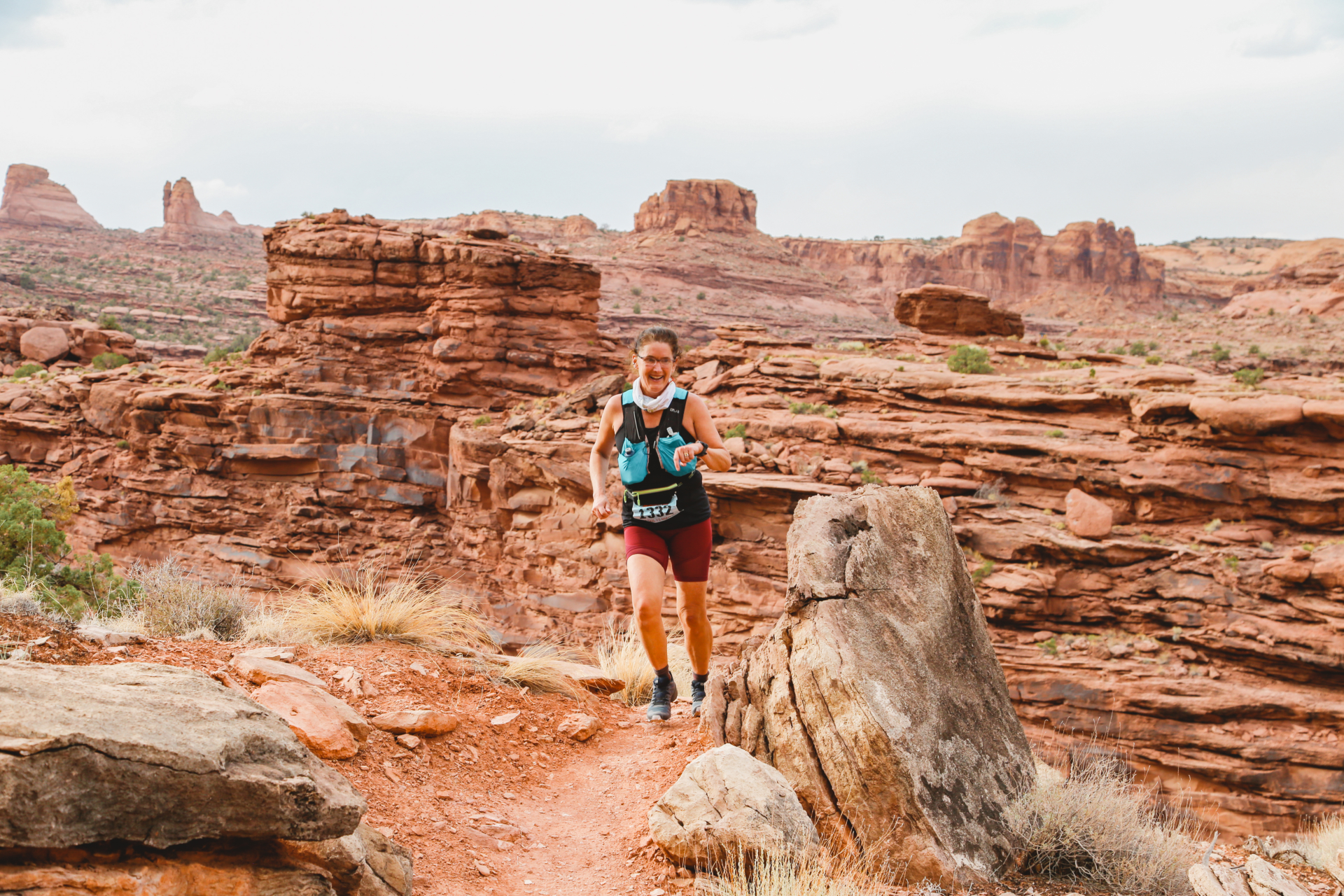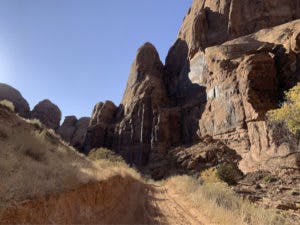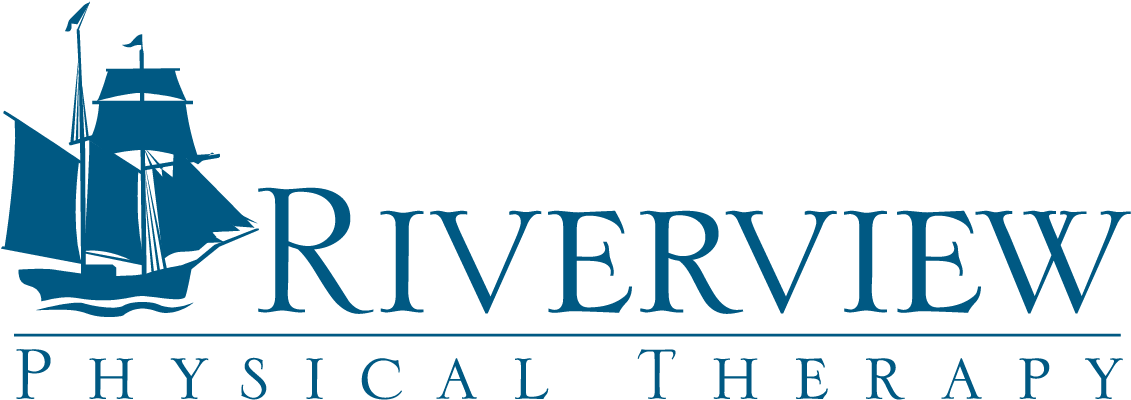
Imagine hobbling into a doctor’s office the first week after getting off of crutches and then imagine that you ask him if you can run a trail marathon in a few weeks. You probably can guess how he would look at you. And that’s exactly how physical therapist Greg Knapton looked at me. Ever the consummate diplomat, he said, “I’m not going to tell you you can’t do it, but…” He trailed off and proceeded to put me through the paces of PT exercises I never knew existed. He tired out muscles I didn’t know I had. Masking both of our struggles, another patient and I joked that Knapton was a sadist, as we groaned our way through the exercises that we knew were good for us. He played along.
In truth, it was a long shot that I was going to do this. My left quad, I was told, had “stopped firing” in order to protect my left knee. Why? Because I had hammered my left knee downward into a tree root on a training run in the forest. A few stitches, a tetanus shot, and a week on crutches later, it was as though my left leg had amnesia. After months of training for this race–running for sometimes four hours at a time–I was now a hot mess. The doctor saw tears in my eyes.
“I get it.” he said. “When does it hurt most?”
“When I walk. And,” I added, helpfully, “when my knee is bent in a sitting position for awhile.”
“You’re telling me that you want to drive across the country to Utah to race and it hurts to sit?”
There it was. The idiocy of my desire was out in the open. That was exactly what I wanted to do. Drive 5800 miles round trip to compete in the Moab Trail Marathon through rugged Utah terrain. Yup. When he put it that way, it sounded hopeless.
Breathe. Breath. Air. Oxygen. We can’t live without it. As much as we have explored the
deepest oceans, have climbed the highest mountains, and have rocketed to the most distant heavens, we have had to figure out how to breathe where there is no oxygen. Millions of people had been struggling to breathe. More than a quarter of a million people have now died over the past several months from the pandemic, losing their battle to take their next breath. Millions more had their conscience permanently pierced–mine included–by George Floyd’s last cry, “I can’t breathe.” Countless–no, generations–of African Americans have not been able to breathe for the knee on their collective neck. It felt as though injustice and the pandemic were sucking the very air out of all of our lives, yet some were impacted far more than others.
I felt the weight of it all on my chest. I felt suffocated. I thought I would go mad if I couldn’t breathe. I looked at my knee that had recently approached the appearance of an oversized baseball; it was nothing but a tiny malady against the backdrop of a national disaster. Get over it, I told myself.
My fear of flying during the pandemic was another hurdle to my goal. There was no way I was getting on a plane and sharing air for hours with other people, even if the airlines
produced ten more videos about air circulation safety. My husband and I had already worked out a safe way to cross the country earlier this year–camping, cooking our own food on a camp stove, carrying our own water and avoiding people like the plague we all really are at this point. We were a bubble on wheels. We started out from Maine on October 30th and hoped the blizzard on our first day of driving wasn’t a bad omen.
Four days of driving and lots of remote-work using- hotspots later, we pulled into the red rock country of Moab, Utah. We arrived a few days before the race to acclimate to altitude. When we drove through Colorado, we stopped at a gem of a trail running place–Staunton County State Park. The 8000+ foot elevation had handed our backsides to us with a polite smile. Even though the Moab race would crest between 5000-6000 feet, our seaside homeland put us at a distinct disadvantage. Imagine throwing a bag of bird seed on your back and trying to run with that. Add a slight headache and some intestinal distress and you get the picture. Not exactly prime racing form. Between adjusting to altitude and rehabbing my leg as we drove across the country, I decided I should run in the half marathon length instead of the full 26 miles. This would at least make me half sane, right? Coronavirus in Utah worsened considerably as we crossed the country. Conditions were making the national news. I contacted the race director who was answering the same question hundreds of times. The list of protocols was long; the plan sounded solid and safe, even to me. It felt like the universe was throwing every possible obstacle in the book. But, of course, it wasn’t done. Race day dawned with two weather warnings: extremely high winds and thunder and lightning in the afternoon. Anyone who knows me knows that my eyes roll into the back of my head at the mere prospect of being outside in a lightning storm, never mind being miles and miles from a finish line and up on top of a mesa.

PRITCHETT CANYON, MOAB, UTAH
“We are what we breathe.” To me, this is as true as “we are what we eat.” What we put into our bodies–food, water, air–defines us in so many ways. On this day–race day–I would breathe dust, sagebrush, fear, and healing.
The sun shone brightly, making it surprisingly hot for November. Twenty of us stood at the mouth of Pritchett Canyon, spaced carefully apart from one another by bright red disks nailed into the dirt. We all wore masks. The previous wave of runners had left five minutes earlier. My husband’s marathon had departed hours ago. The wind lifted fine sand from the mesas around us and tried to scour our exposed skin. I congratulated myself for deciding to wear glasses; the eye protection would be necessary today.
The race director, Danelle Ballengee, began a long pep talk as our wave awaited our start time. I thought about how she was famous as an ultra runner because she had survived a terrible accident on a solo training run with her dog. Danelle fell 80 feet, then crawled for hours with a broken pelvis, until her dog eventually led rescuers to her 48 hours later. This gave her advice authority when she advised that we hydrate frequently throughout the four-mile ascent through Pritchett Canyon. She said when we ascended the mesa, we didn’t want to be dizzy or light-headed because we would be running along cliff edges. Cliff edges? She had my full attention. Correct; as someone with a fear of heights, I did not want to feel light headed on a cliff edge, thank you very much. She casually mentioned that they had already extracted one man from a prior wave. She hoped there wouldn’t be more. Yeah, me, too.
One minute remained to start. Danelle pointed out to us all how the marathoners–on a trail high above us–were disappearing into a red rock tunnel and then re-emerging further down the face of the cliff. I looked to see if I could glimpse my husband, hoping he hadn’t been the man that they had to extract. Anything could happen to anyone. I flexed my left knee; I had definitely made the right decision not to run the 26 mile length. Thirteen would be enough. But I vowed to get through the half marathon and come back next year for the full marathon. Would all the PT and anti-flammatory hold? I really wasn’t sure.
“5-4-3-2-1-have fun!” Danelle shouted. We were off. Running up Pritchett Canyon meant following the wash–or eroded floor of the canyon. We alternated between running over bedrock–worn smooth by a millenia of flood waters–and plowing through red sand, deep as a beach dune. The wash was wide enough that we remained spread out as we ran. The beauty of the landscape demanded my attention; cliffs shot skyward in castle-like formations, set against a crystal blue sky. The thunderstorms forecasted were nowhere in sight, yet.
They had warned us that many different types of sportsmen used Pritchett Canyon and that we would need to watch out for mountain bikers and ATVs. Somehow, this didn’t prepare me for the spectacle of a convoy of five vehicles in the middle of nowhere, each resembling a cross between a Humvee and a dune buggy. Think Mad Max. A crowd of people stood on the edge of a high ledge on the canyon wall. They spectated as though from bleachers. One ATV was attempting to drive up the nearly vertical wall. Its motor roared and people watched with rapt attention. Without a doubt, they considered the runners a nuisance because the vehicles needed to either stop or slow to allow our wave to pass.
In the last mile of the canyon, we were ascending more steeply onto the mesa. Here we came across a souped-up pickup truck doing much the same as the ATVs previously. My father would have been able to tell you the make, model, and year of the truck, in addition to how it had been modified. I can only tell you it was big, white, and perched vertically–stuck, really–on a cliff face that was so vertical, I needed to use both hands to climb up the cliff face myself.
The truck lurched back and forth off to the left of where my running mates were disappearing over the canyon rim high above my head. A white-haired man stood above the truck, shouting instructions. The young driver gunned the motor again, but the truck remained stuck.

LOOKING DOWN ONTO THE PRITCHETT CANYON TRAIL. TINY RUNNERS VISABLE ON THE TRAIL
Maybe I’m not proud of what I did next, but I couldn’t help myself. I had now clambered up high enough that I was eye level with the driver. The passenger window was open. The whitehaired guy shouted to the driver–who was maybe in his twenties–” I think it would work better over where she is,” and he pointed at me. The driver turned and looked me in the eye.
I grinned and said, “You know it’s faster to just climb up.” And I was gone. I know people enjoy the thrill of motorized vehicles on rugged terrains. I’ve taken an off-road jeep ride–once; it was fun. But when a woman twice your age scrambles up a cliff face in the blink of an eye while you remain stuck with your headlights skyward, well it just strikes me as a bit absurd. But, then, most people would view doing this race as absurd.
That was the last of vehicles, though, because I had crested onto the mesa, some 1000 feet above the starting line. By the time I reached the first aid station, my water bottles were empty and needed refilling. I gulped down a second gel and started to run back and forth among short juniper trees. The short reprieve from climbing was most welcome. Then, I saw the black clouds amassing behind the next mesa. If a storm overtook the runners, there was absolutely nowhere to go. The only way to get out of this race was to finish it. I tried to focus on my running form, remembering what the physical therapist had told me, keeping my stride as uniform as possible. So far, my knee was holding up.
Then, below the trail to my left, the next canyon–Hunter Canyon– yawned like a cavernous slash in the earth. It was breathtakingly beautiful. Running time and storm clouds be damned, I had to stop and take pictures. I wanted to remember this feeling of elation and surprise; I wanted to breathe this millenia of geological history into my lungs (filtered by my buff, of course). I picked my way along the trail, sometimes running between trees and boulders. Other times, I was climbing carefully over bedrock outcrops where the trail pinched out at the canyon edge. I wanted to remember how alive I felt, how each step I took mattered and where I couldn’t afford a moment of inattention or mindlessness.

PAUSING TO CAPTURE A VIEW DOWN INTO HUNTER CANYON FROM ITS RIM TRAIL
Step. Grab. Pull. Breathe. Follow the trail. Keep going. Drink. Eat. Breathe. And breathe again.
During the rim trail section, I overtook a man from a previous wave who was quite elderly. In the running world, this category is called “master runner,” though. He ran with two trekking poles to balance his stooped spine. He moved slowly, but steadily, clearly knowing his own pace. I briefly felt the impulse to ask him how he was doing, but I knew that would be patronizing. Instead, I offered a “Hello” and “Isn’t it a beautiful day?” as I passed him. He smiled broadly and nodded. He was definitely okay and I hoped I could do this well when I was his age.
The storm clouds crowded closer and droplets splattered on the dry sand. The wind continued to pound, push, and scour. The glasses and buff were welcomed shields.

Storm clouds threaten on the horizon.
It was all bedrock now and the trail turned sharply rightward and downward. The descent into Hunter Canyon had started. The trail narrowed and narrowed until I looked almost directly down beneath my feet.
Suddenly, a young man appeared, standing facing me on the trail, patiently waiting. “Hi,” he said. “I’m here to help you get down.”
“Oh?” I was really thinking “uh-oh.”
“You need to climb down this rock face here,” he pointed. “Then follow that ledge to your right.”
“Okay,” I replied, with the bravest voice I could manage.
It was clear that if you missed this exact route, you could get stuck on a vertical face. If it weren’t for the coronavirus (and perhaps two decades of age difference), I could have kissed him with gratitude for being there as a support.
“Be careful,” he said, as I started down. And then as I hit the ledge, “You okay?”
“Thank you,” I called up. And he went off to reposition himself for the next runner.
Volunteers manned the second aid station at the bottom of the canyon. I refilled water again, gratefully. “Having fun?” the volunteer asked.

ASCENT OUT OF HUNTER CANYON ON KANE CREEK ROAD. TINY RUNNERS VISIBLE ON ROAD
I paused. My most recent emotions had trended closer to fear and then relief. But his question re-centered me. “Yes,” I replied. “I love this.”
Thankfully, the core of the weather front had not yet hit. Hot sunshine and dark clouds took turns flipping the temperature back and forth. Given that the next section of the race, wound mile after mile through deep canyon washes of Kane Creek, the delay in the rain was a blessing. Thunderstorms in the desert could turn these washes into flash flood zones. For now, they remained corridors of dry cobble and deep sand that were lined by cliffs or scrub oak and occasional cactus.
As had been the case for the past hour, I ran alone. No sound of planes. No sound of automobiles. No sound of people. Just footfalls and the rhythm of my breathing–heavy breathing, at this point. I felt tired and my left quad was starting to complain. With the finish line only a few miles away, I ran through more deep washes, dodged cactus, hand-scrambled up steep slopes, kept a strong pace down a long stretch of dirt road, tiptoed across a narrow wooden footbridge, and slogged through more deep sand. Naturally, the final approach to the finish line required a crawl up the sandy face of a bluff. How appropriate.

RUNNING THE HALF MARATHON IN MOAB, UTAH
You know the moment when you hug a family member and the embrace lingers? You each take multiple breaths and feel your ribs rise and fall against each other. You know the moment when you sit with a dear friend and you put your heads together? You feel the warmth of the friendship in the breath on your cheek. You know the moment when you check on a sleeping loved one, when you draw close enough for the rise and fall of their breath to meet your own? You feel reassured that all is well. Then there’s that moment when you and your friends’ conversation dissolves into uproarious laughter.
Nearly all of this is missing from my life right now; the absence of this shared breath is like suffocation. I needed to breathe deeply, to feel alive, to fill myself with a healing breath. As I stepped over the finish line and bent over to gasp for more air, I felt filled.
For those trail runners or readers who might also feel suffocated by the injustices around us, I encourage you to consider donating to Murdered & Missing Indigenous Women. Indigenous women are murdered at a rate ten times higher than other groups, making it the third leading cause of their death.
Patricia Erikson blogs about writing, trail running, travel, and science from the award-winning city of Portland, Maine. If you haven’t already, follow her on Instagram at @seashorewrite (https://www.instagram.com/seashorewrite/) or subscribe to Peaks Island Press.
